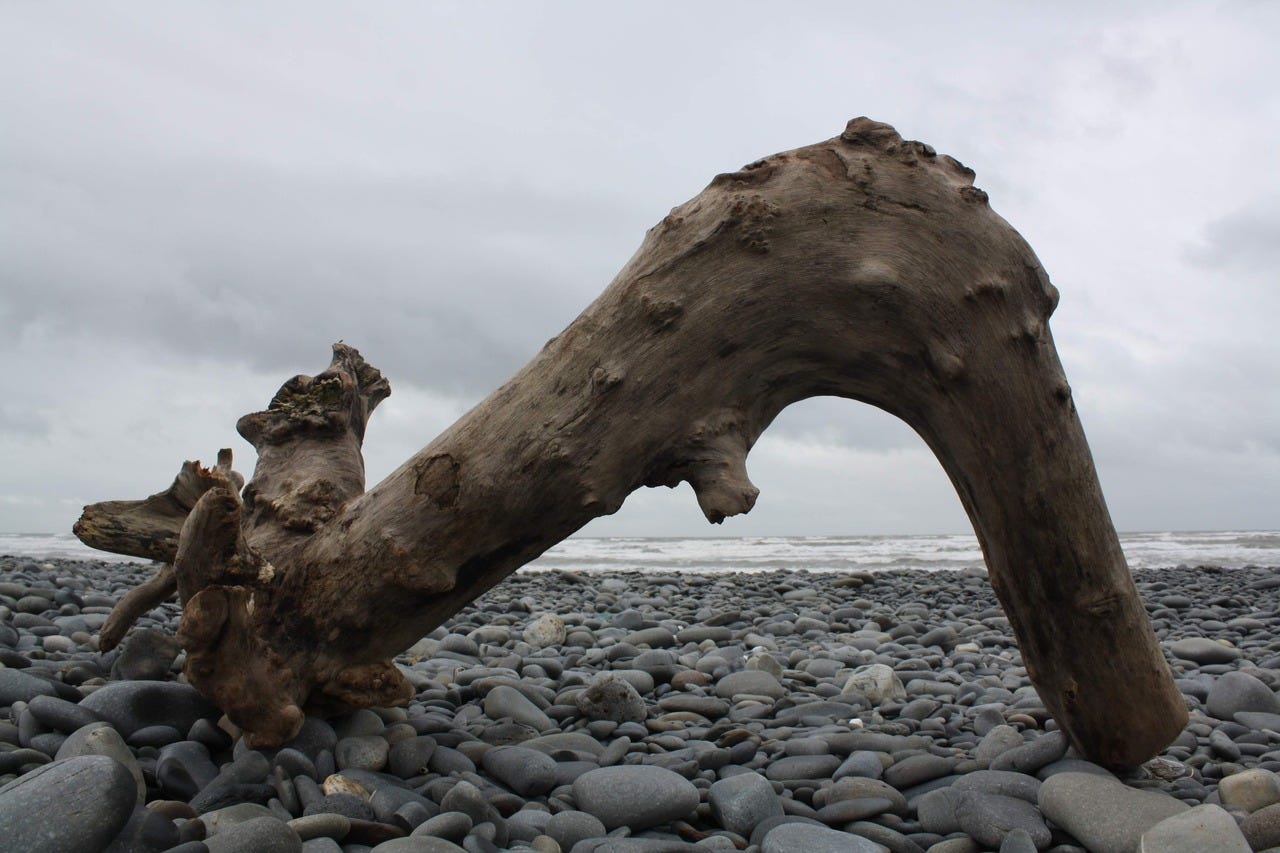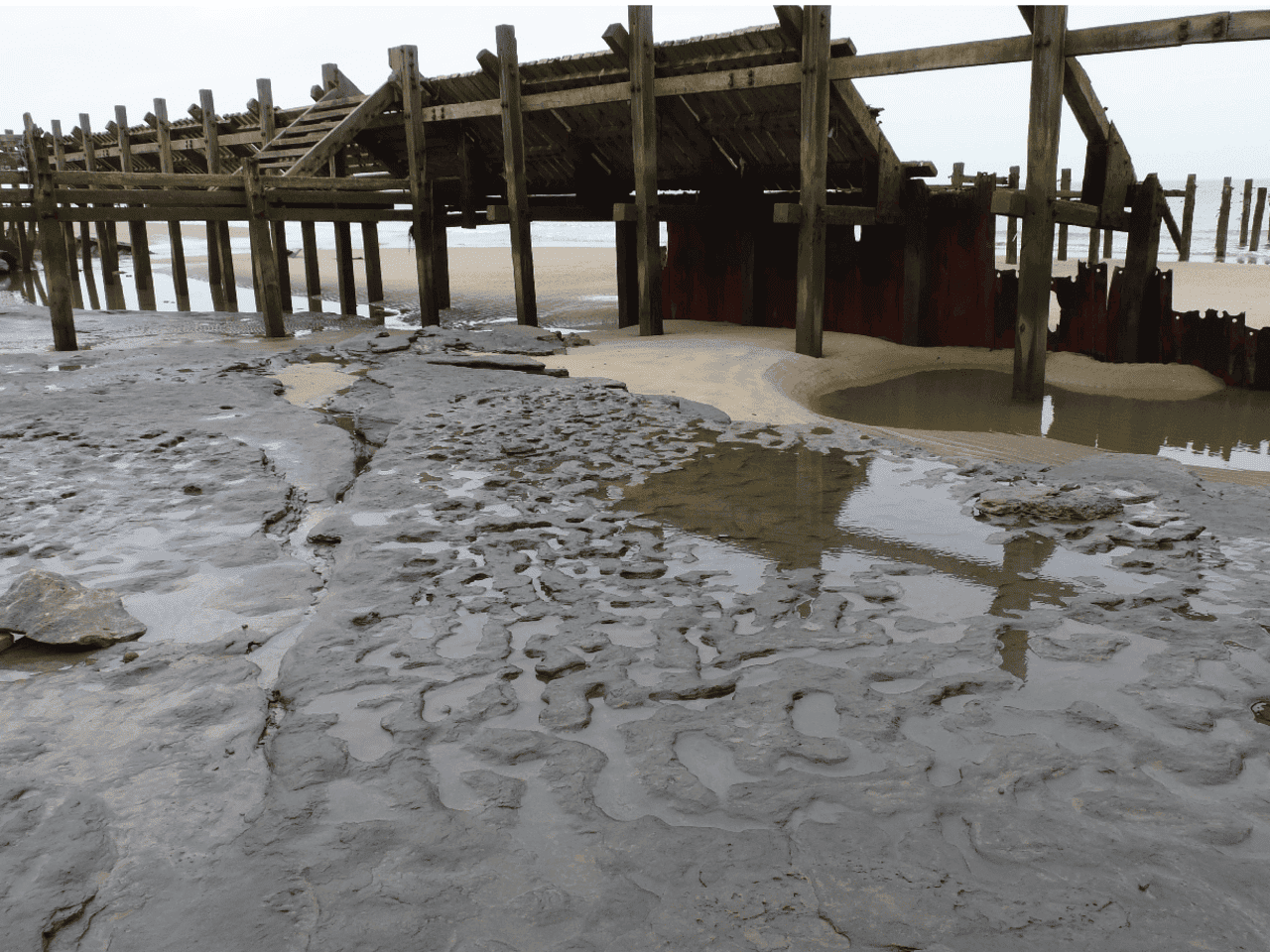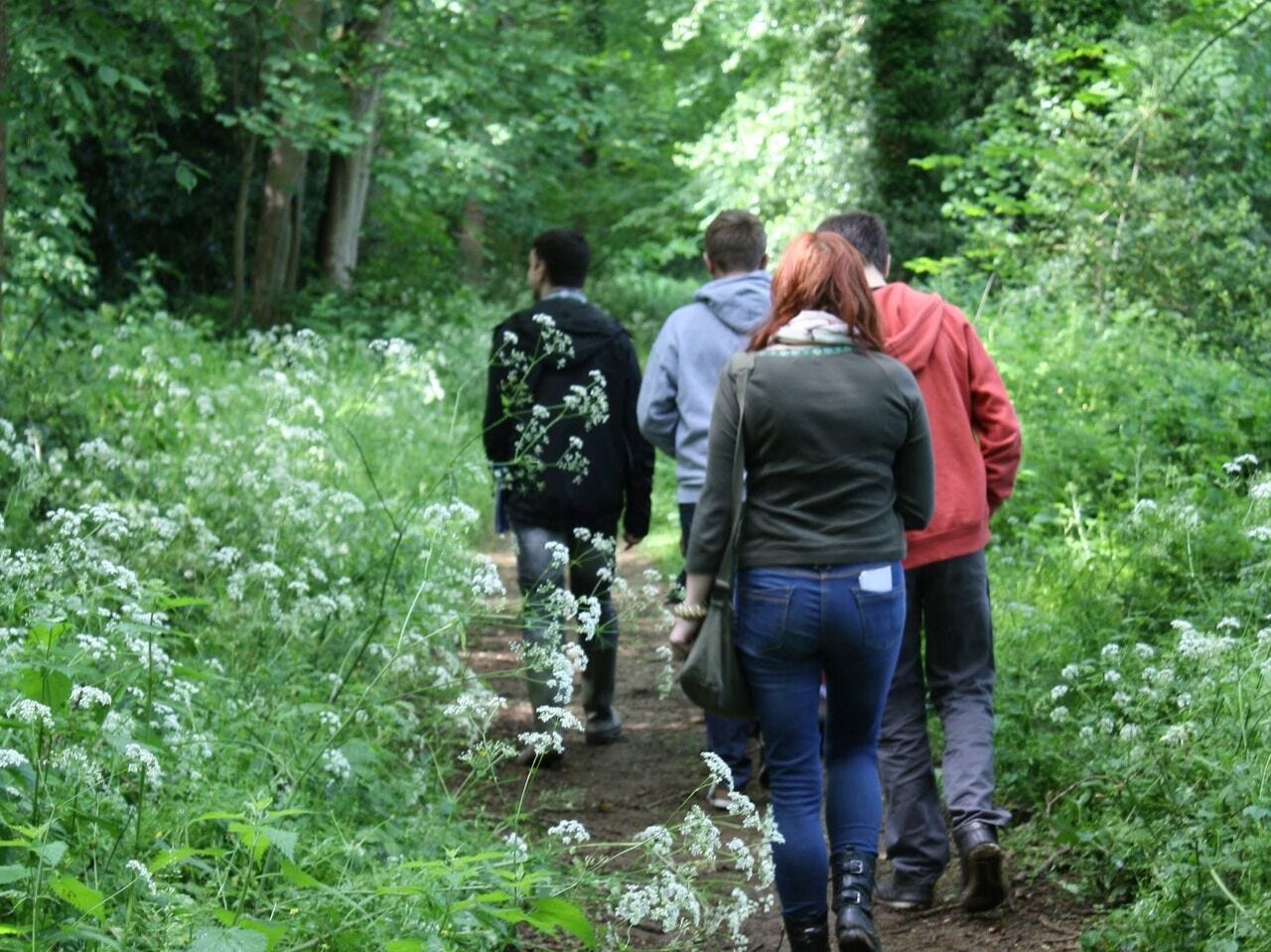“Take nothing but pictures, leave nothing but footprints.” If you want to tread lightly on the environment as you walk, this phrase may resonate deeply. We would love to imagine that we can step into the world and somehow leave it undisturbed by our presence. But reality is always a little more complicated.
Walkers have been making a trail across British soil for thousands of years. Our oldest track was first walked 5,000 years ago, and the Ridgeway can still be travelled today. But long before humans began establishing paths and waymarkers across the landscape, even older footprints were left behind.
Fossilised footprints
Very occasionally, and in exactly the right conditions, an ancient footprint becomes memorialised for all time. The mud of a tidal river bank is an ideal location. If a footprint is filled with silt, exposed to the sun and left to dry, it might resist erosion by the next incoming tide. If it can become buried in further layers of sediment, a muddy imprint can slowly harden as a permanent mark in the earth’s crust.
Given the improbable circumstances needed to preserve a single footprint, you might imagine that they are vanishingly rare. In fact, an entire field is dedicated to their discovery and preservation. Ichnology, the study of trace fossils, is a branch of science that began with Leonardo da Vinci’s observation of worm traces between layers of rock. He found not the creatures themselves but incontrovertible evidence of their past presence, upending centuries of understanding about life on our planet. Today’s ichnologists follow in his footsteps.
On the island of Britain, ancient footprints are most often exposed through the erosion of sedimentary layers at sea shores. Storms and tides bring them to light and leave them fragile and vulnerable. Ichnologists must work quickly to capture the details before they are lost forever.
It is impossible to know how many ancient footprints may have appeared on remote beaches and, unnoticed, been washed away by the waves. Some, however, remain.
Formby
A little way up the coast from Liverpool, Formby is a honeypot for summer visitors. Miles of golden sand, rolling dunes and soft pine woodland can be blissful on quiet days. But packed with crowds on hot, sunny afternoons, it can be hard to find a secluded spot. The National Trust car parks quickly become crowded, and parking elsewhere is a bone of contention for locals. Travel by train if you can; there are frequent services from Liverpool and Stockport.
Best of all, come in winter. It’s a time when, scoured clean by storms, the sands of Formby occasionally reveal their secrets.
First noticed in the 1950s, the footprints at Formby, preserved in a layer of hardened silt beneath the beach, date back an astonishing 9,000 years.
In the wake of the last ice age, humans existed here as part of a diverse ecosystem; scientists have identified footprints of at least seven species of large mammals alongside human prints, including aurochs, deer, boar, beaver, wolf and lynx. But this was no multi-species idyll. It was a hunting ground. The earliest human visitors to this intertidal landscape and soft marshland stripped its biodiversity in an attempt to survive. Over time, human footprints would come to dominate the fossil records, and by the Neolithic period, animal prints would be nearly non-existent.
But human footprints continued to be made through the centuries, the most recent being from the Middle Ages. So far, the footprints of 192 people have been found in Formby. Adults and children, walking and running. All of them made a mark.
Borth
Beyond the mid-Wales coast, an ancient forest floor stretches out towards the horizon. The fringes of this vast, lost land lie just beneath the seaside village of Borth. For centuries, heavy storms have revealed the peat bogs and tree stumps concealed below the beach’s surface, but in 2012, two brothers walking the water’s edge noticed footprints.
Unlike Formby’s hunting grounds, the footprints at Borth were made in a permanently inhabited landscape. Alongside the impressions in the peat, researchers have found postholes, burnt stones, evidence of settlements and other archaeological remains, dating them to around 6,000 years old.
Borth today is dominated by a single road that follows the straight line of the coast towards the Ynyslas nature reserve at the mouth of the river Dyfi. But when the footprints were left behind, this land was several kilometres from the water’s edge. As the sea level rose, the forest slowly gave way to salt marsh, eventually sinking beneath the waves.
There is a legend told in this part of the world of the Cantre’r Gwaelod. In the earliest recorded version of the story, from the 13th-century Black Book of Carmarthen, the priestess Mererid neglected her guardianship of a sacred well, allowing it to overflow and flood the land. A later version of the tale places blame at the feet of Seithennin, a royal guardian tasked with closing the sea gates. After a drunken feast, he failed to shut them, letting storm tides engulf the kingdom.
It isn’t easy to ascertain the true origins of folk tales passed down through generations of storytellers before they are encoded in literature. And we’ll never know exactly who walked the earth revealed by Borth’s wintry storms. But perhaps the stories of Mererid and Seithennin point to a deep memory of land lost beneath the sea, now exposed as footprints in waterlogged peat.
Happisburgh
I spent some of my childhood in East Anglia, on a coastline shaped by the erosive power of the North Sea. My grandmother would tell me tales of the drowned city of Dunwich and the ghostly church bells that could be heard at low tide. Today, all that remains of Dunwich’s medieval splendour is a tiny village with a population of less than 100, though, in a remarkable quirk of ecclesiastical history, its submerged cathedral still has a bishop.
Like Borth, the East Anglian coast is a place to look towards the horizon and wonder what might have been. But a little further north from Dunwich, there is a history far older and even more remarkable than tales of medieval land surrendered to the waves.
Happisburgh (pronounced Haze-bruh) is another village fighting a never-ending battle to preserve itself from erosion. But in May 2013, the crumbling of its coastline revealed something that would revolutionise our understanding of prehistoric inhabitation not only in Britain but throughout Europe.
Around 50 footprints were found. Researchers raced to photograph and record them, building detailed 3D models before the prints were washed away. The data they collected in just two weeks tells an evocative story. A group of five people, adults and children, walked alongside a river foraging for shellfish, crabs and seaweed. They continued south until, eventually, they reached firmer ground and their footprints vanished.
But what makes this family outing extraordinary is when it happened. Scientists have established that the Happisburgh footprints were between 850,000 and 950,000 years ago. And the group that made them were not modern humans, Homo sapiens, but our ancient relatives, Homo antecessor.
These pioneers pushed further towards the frozen north than we ever thought possible. At the time of their foraging expedition, much of northern England, Wales and Scotland was covered by a deep sheet of ice. And they didn't only survive in an inhospitable climate but thrived against the odds. Evidence of human habitation in Britain almost a million years ago is mind-bending in itself, but I am struck most by the simple story of a family spending a day together, exploring their world and foraging for food.
Walking in ancient footsteps
If I follow an old track to a stone circle or set out on a pilgrim trail, I might sense that I am walking in ancient footsteps. In my mind, I can just about comprehend a history of walking on these islands that stretches back several thousand years, and feel a connection to those ancient lives.
But beneath the surface, hidden in layers of sediment, is an even older story. It’s a tale of humanity that pushed into unexplored territory, lived together, and found sustenance in the landscape. Nearly million-year-old footprints, briefly revealed by the sea, invite me into an appreciation of a deeper inheritance. Walking through a woodland, following a river, looking out at sea, I am doing what we have done since before we were human.
And I wonder about the footprints I leave behind me. The pioneer family who foraged for food alongside a river could never have dreamed that, almost a million years later, their sunny afternoon of walking would be celebrated as a prehistoric marvel.
They simply walked, and the earth conspired to remember their footsteps. Perhaps leaving nothing but footprints is the most important thing any of us will ever do.










My sister lives in Happisburgh, getting rapidly closer to having a sea view! I had no idea about the family of footprints, what an incredible find.
Footprints across time, we can only speculate on their thoughts as they walked yet somehow that act of walking resonates with us now - those 192 - which one was I most like? Who might i have most got on with? Thanks for stirring such thoughts